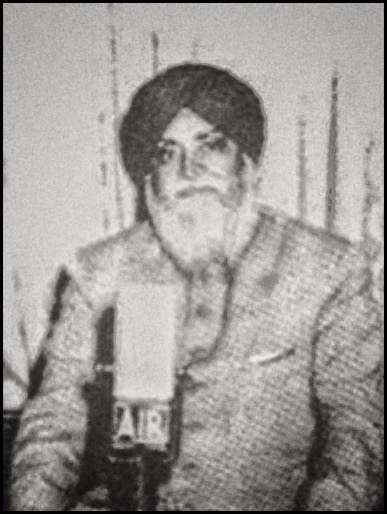DHARAM SINGH, BHAI (d. 1921) was the youngest of the four sons of Bhai Sant Singh and Mai Hukmi, of the village of Bundala, in Amritsar district. He was only four years old when the family migrated to Chakk No. 71 Bundala Bachan Singhvala in the newly colonized district of Lyallpur. His education was limited to rudimentary knowledge of the Punjabi language which he could barely read in the Gurmukhi script. He was robustly built and enjoyed wrestling.
DHERA SINGH, BHAI (1890-1921), was born on 29 August 1890, the son of Bhai Jaimal Singh and Mai Jivan Kaur, a peasant couple of Pandori NiJjarari, in Jalandhar district. On the opening of the Lower Chenab Canal Colony in West Punjab, the family settled in Chakk No. 91 Dhannuana in Lyallpur district. Dhera Singh, though illiterate, was an anointed Singh. He never married and led a simple life of honest hard labour until his martyrdom as a member of the jatha that was massacred in the walled compound of Gurdwara Janam Asthan at Nankana Sahib on the morning of 20 February 1921. See NANKANA SAHIB MASSACRE
BECHINT SINGH, BHAI (1872-1921), one of the Nankana Sahib martyrs, was the son of Bhai Sundar Singh and Mat Sahib Kaur, a peasant couple of the village of Pharala in Jalandhar district. The family migrated to Chakk No. 258 Pharala in the newly colonized district of Lyallpur in 1892. In 1907, while returning from Haridvar after immersing in the River Ganga the ashes of his deceased wife, Bechint Singh stayed for a couple of months at Amritsar where he came in contact with a holy man, Sant Kirpal Singh, at whose hands he took the pahul of the Khalsa.
DIAL SINGH, BHAI (1860-1921) was the son of Bhai Deva Singh and Mat Ram Kaur of Ghasitpur village, in Amritsar district. He learnt to read the Guru Granth Sahib in the village gurdwara and enlisted in an infantry battalion at Poona in his early youth. He served for 20 years and had received a gallantry award before he retired on a monthly pension of Rs 4. Dial Singh had married but had no offspring. Shortly before the happenings at Nankana Sahib, he attended a divan (Sikh religious congregation) at Chakk No. 75 Lahuke where he took the initiatory vows of the Khalsa at the hands of Bhai Narain Singh, and offered himself as a volunteer for the jatha or band of Bhai Lachhman Singh ofDharovali. He fell a martyr at Nankana Sahib on 20 February 1921. See NANKANA SAHIB MASSACRE
BELA SINGH, BHAI (1865-1921), son of Bhai Mayya and Mai Raji, a Saini Sikh couple, was born at Kartarpur in Jalandhar district. The family originally belonged to Faridkot state, from where Bela Singh`s grandfather, Bhai Sobha, had migrated to Kartarpur where he served in Guru ka Larigar run by local mahants, who in recognition of his services had allotted some agricultural land to him. Bela Singh was the first in the family to receive the Khalsa paau. He engaged himself in agriculture but also continued to serve in Guru ka Langar.



